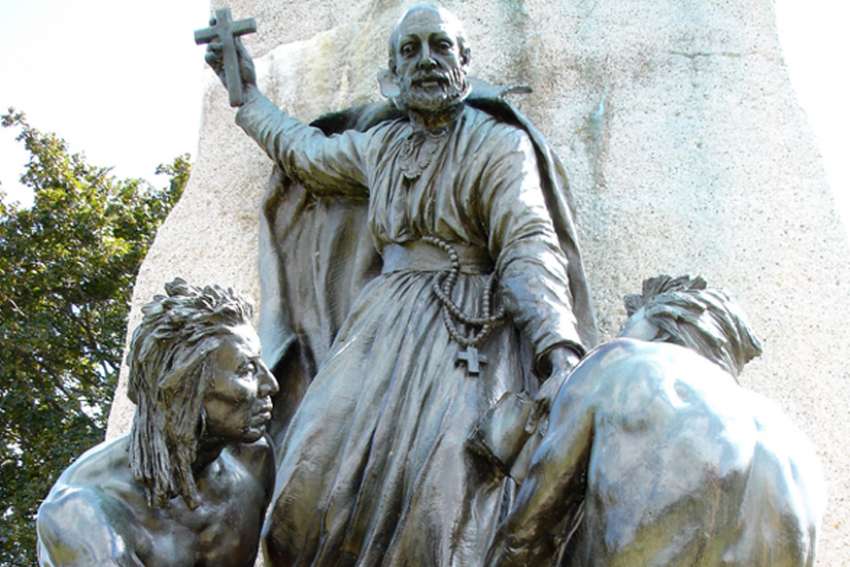Updated with response from the Jesuits.
The missionary, along with a fur trader and four Indigenous figures, will be the subject of further consultation with Indigenous groups before a decision will be made on reinstalling the figures to the monument that has stood in Couchiching Beach Park in Orillia since it was unveiled in 1925, said a joint news release of Parks Canada and the City of Orillia.
Parks Canada owns the land the structure is located on as well as the monument itself and took it down for refurbishing after a 2015 assessment found it to be deteriorating. In 2018 Parks Canada announced the bronze statues wouldn’t return to the park following restoration after concerns were voiced by Indigenous people and others.
The Canadian Jesuits were not part of the discussions around the monument, but Fr. Peter Bisson, former provincial superior, told The Catholic Register that “whatever promotes reconciliation, we support it.”
The original monument portrayed Champlain atop a stone slab and on either side of him were two other scenes where Indigenous people were sitting at the feet of the Jesuit and the fur trader. In recent years complaints had been lodged that the positioning of the Indigenous was racist.
A working group convened from October 2018 to June 2019 conducted consultations on the monument and its future. Among the members of this group were Parks Canada, the City of Orillia, the Chippewas of Rama First Nation, the Huron-Wendat Nation, the Elementary Teachers’ Federation of Ontario and two Orillia citizens.
Its final recommendations, released July 24, called for Champlain to be reinstalled immediately atop the stone slab and that the “First Nations figures along with the figures of the fur trader and missionary be the subject of further consultation with First Nations” with the goal “of re-imagining their presence in the immediate vicinity of the original monument (that) will result in a meaningful and concrete example of reconciliation.”
The text of the original plaque is also to be updated to “honour the original intent within the context of contemporary knowledge and wisdom” and that “additional interpretive signage/pieces be developed and created with the participation of First Nations representatives to tell a historically accurate story of Samuel de Champlain and his relationship with First Nations.” Those consultations will take place later this year.
Parks Canada, in a separate news release, said “the Government of Canada is committed to reconciliation and renewed relationships with Indigenous peoples” and that it is a priority “to honour Indigenous contributions to our shared heritage and history.”
Originally, the City of Orillia council, after a public consultation, said the monument should be returned to the park in its original form and that in consultation with First Nations should develop an accompanying narrative to better reflect history and the context of the monument.
The original monument was done by Vernon March, who was also the creator of the National War Memorial in Ottawa.


